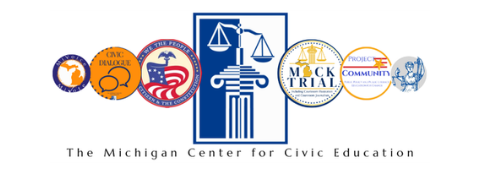Students will learn about the Constitution’s many provisions for voting, including how votes affect the makeup of the government and its branches. The lesson and lesson extensions will have students engage in activities and participate in discussions about how officials are chosen in the three branches of government and how the election process includes the Electoral College.
Civics Lessons
Voting and the Constitution
A History of Conflict Resolution and the Jury System
Students will gain an understanding of the modern jury system and historical methods of conflict resolution. They will compare and contrast the different trial methods of past and present, and analyze each as a way to resolve conflict. They will examine jury trials and the responsibility to decide the facts pertaining to key questions that jurors must answer. Then students will write a persuasive essay arguing for their preferred method of trial.
Why Government?
Students take a look at two political thinkers who spent a lot of time trying to answer the question, “Why Government?” – Thomas Hobbes and John Locke. The lesson asks students to compare and contrast Hobbes and Locke and to think about how these philosophers influenced those that followed in their footsteps.
Citizen Me
Students learn that they are citizens at many levels of society: home, school, city, state, and nation! Students create a graphic organizer that diagrams rights and responsibilities at these different levels of citizenship. They also learn the sources of their rights and responsibilities at each level.
Wanted: A Just Right Government
Students learn how the U.S. Constitution came to exist by looking at the tensions and differences of opinion that existed among early American states and citizens. Students learn about the Articles of Confederation, why the first “constitution” didn’t work, and how compromise led to the Constitution.
Appellate Courts: Let’s Take It Up
Students learn what happens in appellate-level courts and how those courts operate differently from the trial courts most people are familiar with from watching television. By following the case of a real middle school girl who was strip searched at school, students find out what happens when someone takes a case all the way to the Supreme Court. Through this case, students learn about the structure of the federal court system and the way appellate courts decide cases.
Investigating the Departments of the Executive Branch
In this lesson, students learn about the role of bureaucracy in U.S. government; they then examine the history, leadership, organization, and goals of executive agencies.
The Verdict of History
Features seven of the 20 most significant opinions of the first two centuries of the Michigan Supreme Court. from racial segregation in schools to eugenics laws to whether being a member of a nudist colony constitutes indecent exposure, The Verdict of History lesson plans teach student to think critically, develop their decision-making skills, and understand how the judicial system applies to their own lives.
Life, Liberty, and the Pursuit of Happiness: A Lesson on the Declaration of Independence
Students will understand the meaning and central ideas of the Declaration of Independence; cite textual evidence to analyze this primary source; and analyze the structure of the document.
The First Amendment: What’s Fair in a Free Country?
Lesson includes several activities to demonstrate to students that freedom of speech continues to evolve.

